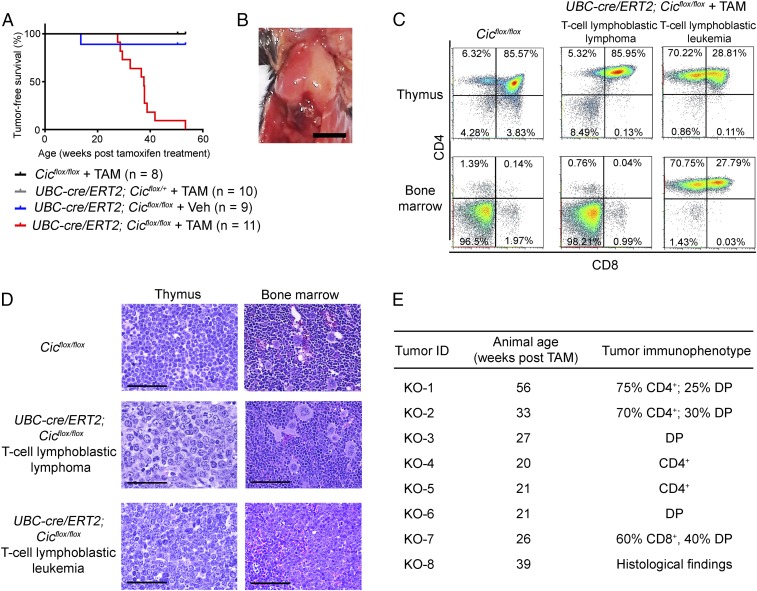Fig. 1.
Deletion of Cic from adult mice causes T cell acute lymphoblastic leukemia/lymphoma (T-ALL). (A) Tumor-free survival for UBC-cre/ERT2; Cicflox/flox mice treated with tamoxifen (TAM) or vehicle (Veh), or control genotypes treated with tamoxifen. The median survival age was 37.6 wk for the UBC-cre/ERT2; Cicflox/flox mice treated with tamoxifen. (B) Representative image of the T cell lymphomas observed in the Cic adult knockout mice. (Scale bar: 0.5 cm.) (C) Flow cytometry analyses of the thymus and bone marrow from the Cic adult knockout mice at their respective humane endpoint and analysis of an age-matched Cicflox/flox control mice. Representative results are shown for a mouse with T cell lymphoblastic lymphoma and a mouse with T cell lymphoblastic leukemia. (D) Histology of a control Cicflox/flox mouse and a UBC-cre/ERT2; Cicflox/flox mouse with T cell lymphoblastic lymphoma and one with T cell lymphoblastic leukemia. Note the blast morphology of T cells in the lymphomas from the UBC-cre/ERT2; Cicflox/flox mice. (Scale bars: 100 μm.) (E) Latency and immunophenotypes of tumors from the UBC-cre/ERT2; Cicflox/flox mice. DP, CD4+ CD8+ double positive.

